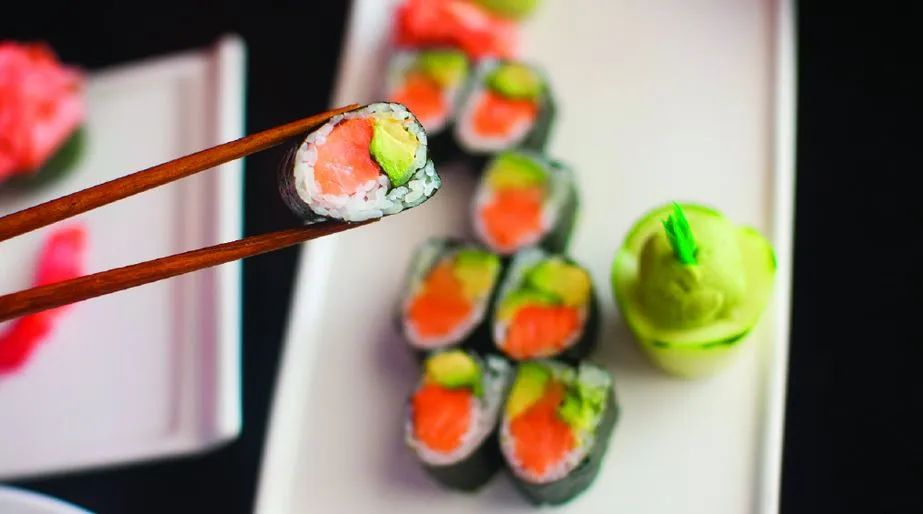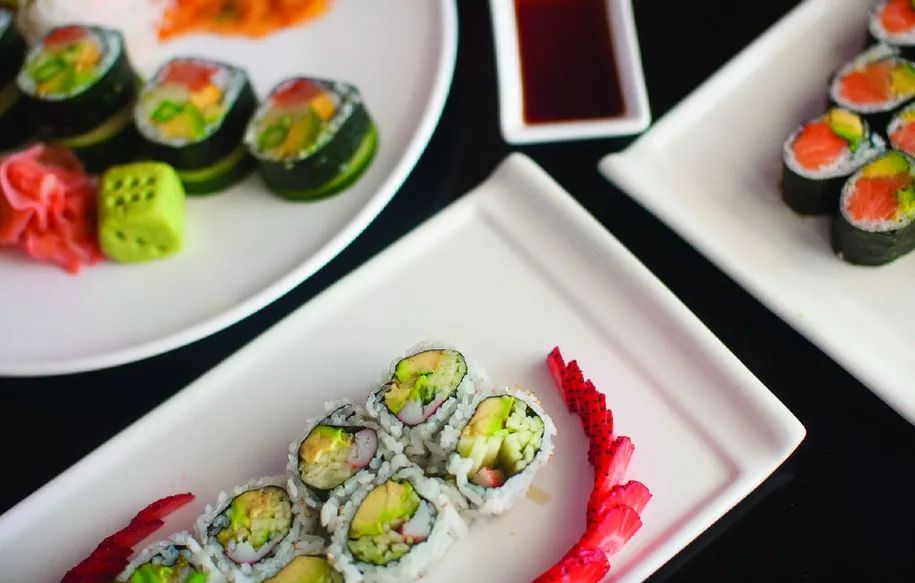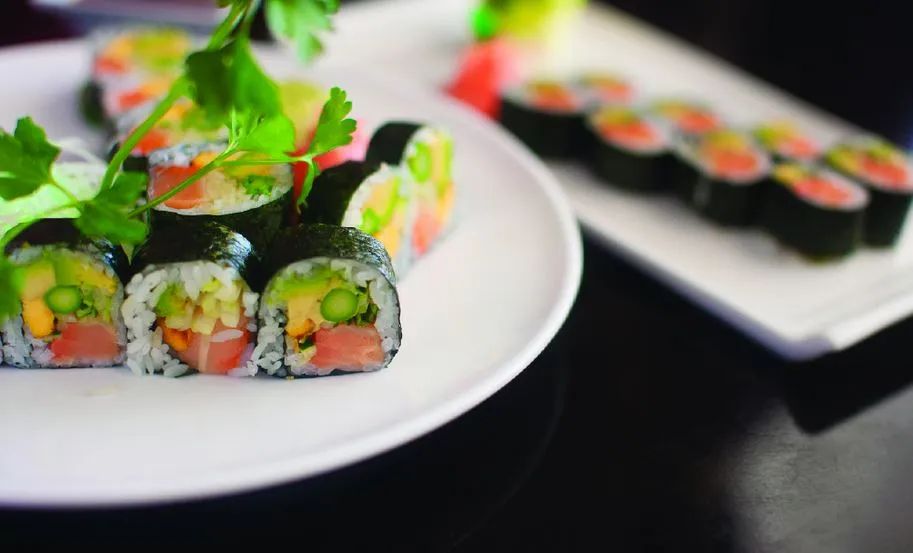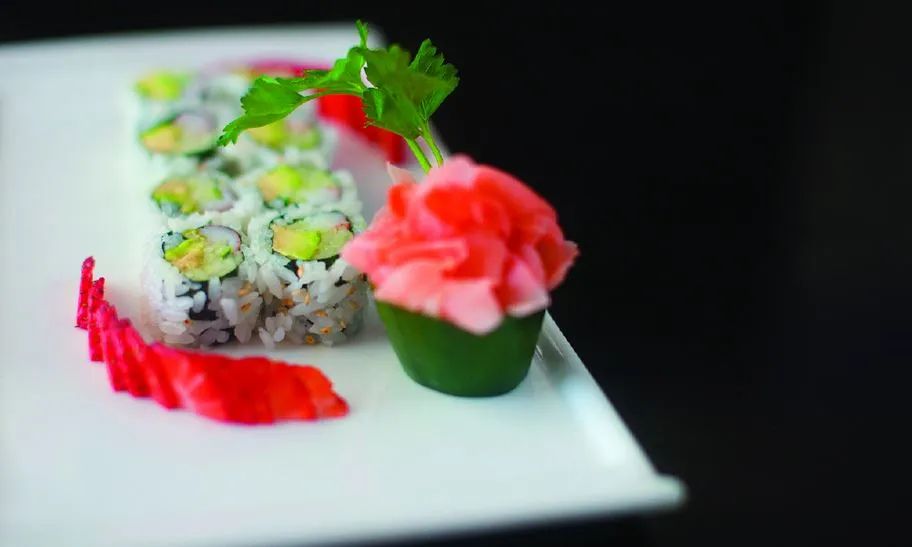
Sushi: Just Rolling With the Times
Even YOU can become a sushi-making master
There was a time when sushi was exotic and a bit foreign to many people's taste buds. That's no longer true. In fact, several local grocery stores stock freshly-made sushi in the refrigerated sections. It seems that most of the strip malls around town have Asian restaurants with fresh sushi on the menu as well.
For long-time Billings’ resident Fusako Martin, sushi was never exotic. It was home. Growing up in Okinawa, sushi was something that her mom and her grandmother made for those special occasions. Their sushi didn’t need refrigeration which made those rolls convenient, yet still special.
With a little help from Fusako, you too can master this delicious and beautiful treat. I've discovered that making it isn't as difficult as it looks. You'll find nori, wasabi and rice vinegar ready and waiting at many local stores to easily add to your pantry. In fact, Fusako suggests having plenty of rice vinegar handy. It’s for dipping your finger as you separate the (very sticky) rice on the nori (sheets of toasted seaweed) and for wetting your sharp knife before cutting the rolls. A hot towel also comes in handy when cleaning off your fingers. Your fingers will become a little sticky because sushi needs sticky rice to hold those delicate rolls together. You'll also need a bamboo mat to help roll the sushi. Before using, cover the mat several times with plastic wrap. This keeps the sushi from sticking to the bamboo and makes cleanup much easier.
Follow these steps and before long, you'll be able to host a “make your own sushi” dinner, becoming one hostess that's truly in demand!
Enjoy!

SUSHI INGREDIENTS
~Recipe from Fusako Martin
Asparagus, trimmed of tough ends, blanched and shocked in cold water
Carrots, cut into match stick size and blanched, after cut
Cucumber, cut into match sticks
Avocado, cut thin
Tamago, cut into thin strips
Smoked salmon, cut into strips
Crab
Please note: these ingredients should all be equal in parts.
SUSHI RICE
2 c. sushi rice (available at World Market and the Asian section of some grocery stores)
2 c. water
2 T. rice vinegar
2 T. sugar
Rinse and place the rice and water in a rice cooker, cooking according to the directions. Alternately, place rice and water in a medium saucepan. Bring to boil over high heat, reduce to simmer and cook, covered over low heat for 15 minutes. Remove from heat and let sit covered for 10 minutes. Put the cooked rice in a large mixing bowl. While still hot, sprinkle the sugar and rice vinegar over the rice. With a rice paddle, spatula or large spoon, gently fold the rice until the ingredients are blended and the rice has a slight sheen, making sure to break up any clumps and being careful not to mash the rice. Cover the bowl with a damp paper towel and allow it to cool slightly before using in the sushi recipe.
TAMAGO (A.K.A. SWEET EGG OMELET)
~Recipe from Fusako Martin
2 eggs
1 t. sugar
Dash of salt
1/2 t. butter
Break the eggs into a bowl and wisk until the eggs are smooth. Stir in the sugar. Heat a fry pan over medium heat with a ½ teaspoon of butter in the pan, swirl to ensure entire pan is covered. Pour the eggs into the pan and turn down to medium low. Cook until the egg mixture is set and begins to dry a little. Gently remove the omelet from the pan. Slice into thin strips.
HOW TO ROLL YOUR SUSHI
For each recipe, you'll use the same basic steps to get that perfect sushi roll, starting with the nori. Nori or toasted seaweed has two sides, a dull side and a shiny or smooth side. Always place the shiny side down on the plastic wrap covered bamboo mat. Place the nori, (shiny side down-dull side up) on the mat. Put the amount of sticky rice called for in the recipe on the nori. Wet your fingers with rice vinegar and carefully spread the rice across the nori, being careful not to mash the rice. Optional: Spread a light line of wasabi across the middle of the rice. Always start with a light touch of wasabi since it is strong. Line up your ingredients along the closest edge of the nori, having edges flush with edges of the nori. Wet your fingers with rice vinegar. Using your fingertips over the fillings to hold them in place, use your thumbs to lift the edge of the bamboo mat closest to you, begin rolling the mat away from you while applying pressure and squeezing the mat as you roll to keep the roll firm, pulling the mat back a little each time. Roll the mat over slowly until you have a roll. Place the roll on a cutting board, seam side down. Cut the roll in half with a sharp knife coated with rice vinegar. Then cut each half in half, and then the halves in half. Repeat the process with various fillings, nori and rice. Serve with wasabi, sushi ginger and soy sauce.

HOSOMAKI: SMALL ROLL
~Recipe from Fusako Martin
1/3 c. cooked sushi rice per roll
Nori (toasted seaweed), ½ sized sheet
One or two sushi ingredients (see list above)
Rice vinegar
Wasabi
Sushi ginger
Soy sauce
Using the ingredients above, follow the directions in the sidebar "How to Roll Your Sushi."
FUTOMAKI: LARGE ROLLS
~Recipe from Fusako Martin
3/4 c. sushi rice per roll
Nori (toasted seaweed), full sized sheet
4 or 5 sushi ingredients (see list above)
Rice vinegar
Wasabi
Sushi ginger
Soy sauce
Using the ingredients above, follow the directions in the sidebar "How to Roll Your Sushi."

URAMAKI: SMALL ROLL WITH RICE ON OUTSIDE
~Recipe from Fusako Martin
Cooked sushi rice
Nori (toasted seaweed), ½ sized sheet
One or two sushi ingredients (see list above)
Sesame seeds
Rice vinegar
Wasabi
Sushi ginger
Soy sauce
Place the nori, shiny side down on the plastic wrap covered bamboo mat. Put about 1/3 c. of sushi rice on the nori. Wet your fingers with rice vinegar and carefully spread the rice across the nori, being careful not to mash the rice in the process. Sprinkle sesame seeds evenly over the top of the rice. Flip the nori so the rice is facing down. Add your ingredients of choice and then follow the directions in "How to Roll Your Sushi" for creating the actual roll, using the plastic covered bamboo mat. Again, you can repeat the process many times with various fillings, nori and rice.












